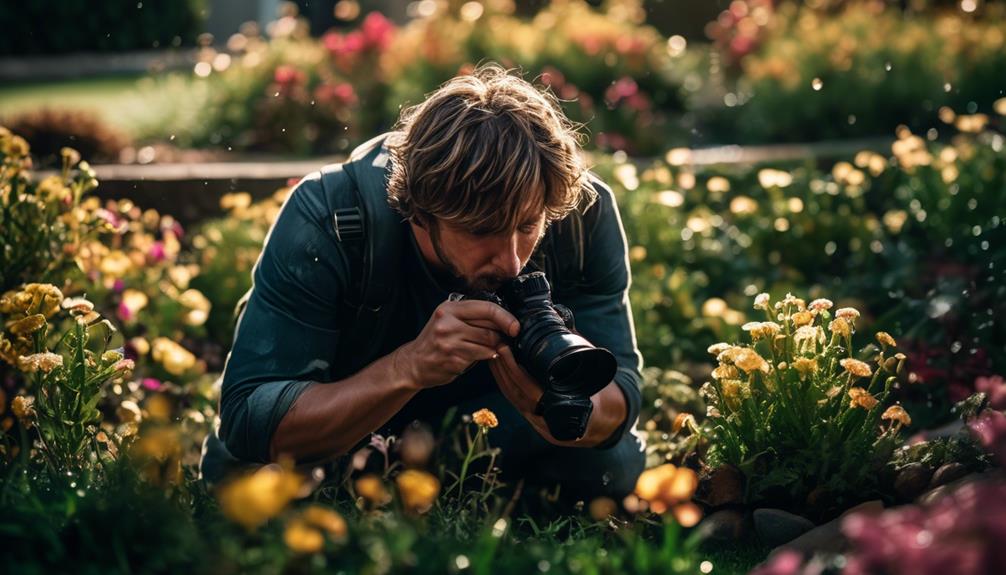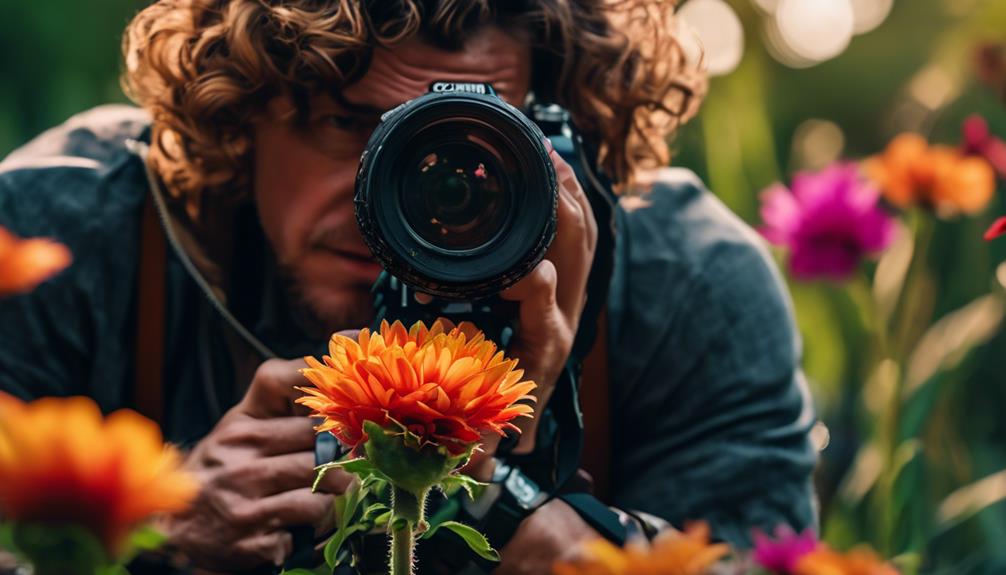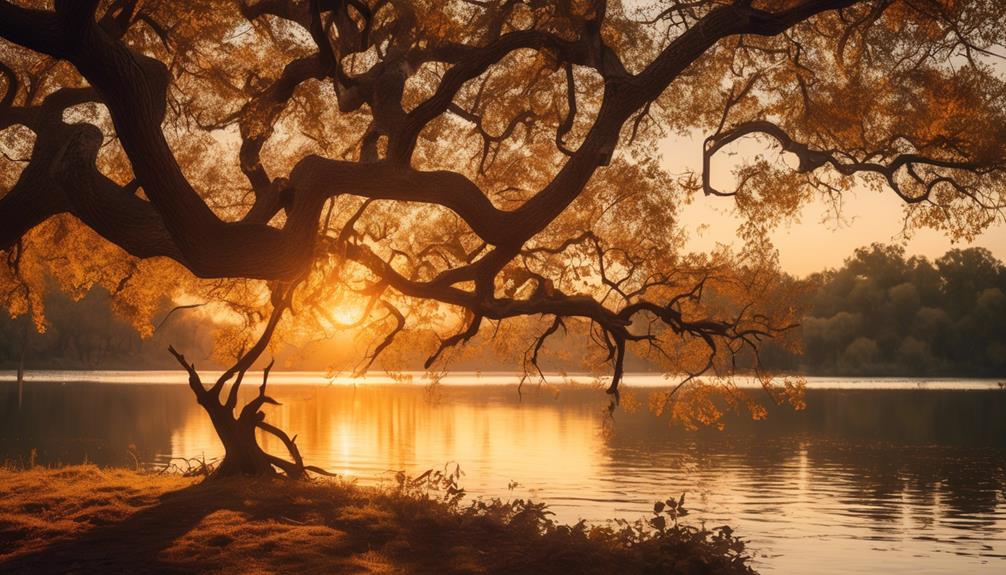Please note this post may contain affiliate links picked by me (Jay) that I have deemed may be of interest or relevant to you the reader of this.
These links do not affect the cost of the thing if you decide to purchase but i may get a little money if you choose to purchase.
For more information on my affiliate link policy click here.
As I walked through the bustling streets of a vibrant city, camera in hand, I couldn't help but feel a pang of frustration. My photographs were lacking that extra spark, that unique perspective that would make them truly stand out.
Little did I know, the key to unlocking my creativity was right in front of me – it was all about the angles.
In this discussion, I will share with you the secrets I discovered on my journey to finding those elusive creative photography angles.
From exploring unconventional perspectives to playing with framing and composition, we will delve into the world of angles and how they can transform your photographs into captivating works of art.
Get ready to see the world through a whole new lens.
Key Takeaways
- Angles and perspectives play a crucial role in visual storytelling and adding depth to photographs.
- Experimenting with low and high angles can create dramatic and unique perspectives.
- Framing and composition are essential in capturing the viewer's attention and telling a story.
- Capturing reflections creatively can enhance the visual appeal and add interest to images.
Understanding the Importance of Angles
Understanding the importance of angles in photography is crucial for capturing unique and visually captivating images. As a beginner photographer, I quickly realized that angles play a significant role in visual storytelling through perspective and enhancing depth and dimension in my photographs.
When I first started experimenting with different angles, I was amazed by how a slight shift in perspective could completely transform a mundane scene into a visually striking masterpiece. By consciously choosing the right angle, I was able to convey a specific mood or emotion, adding depth to my photographs and making them more engaging for viewers.
Angles have the power to draw the viewer's eye to the main subject and create a sense of movement within the frame. For example, shooting from a low angle can make the subject appear dominant and powerful, while shooting from a high angle can make the subject seem vulnerable or small. Playing with angles allows me to control the narrative and guide the viewer's attention to the story I want to tell.
Furthermore, by experimenting with different angles, I discovered that they can also enhance the sense of dimension in a photograph. By incorporating leading lines or diagonal angles, I can create a dynamic composition that adds a sense of depth and makes the image more visually interesting. This technique is especially useful when capturing landscapes or architectural structures.
Understanding the importance of angles in photography hasn't only allowed me to capture visually captivating images but has also pushed my creativity to new heights. By constantly exploring and experimenting with different angles, I'm able to create innovative and unique photographs that tell a compelling story through perspective and enhance depth and dimension.
Exploring Unconventional Perspectives
When it comes to capturing unique and visually captivating images, it's time to think outside the box and explore unconventional perspectives in photography. By breaking free from traditional techniques and embracing new ways of seeing, you can unlock a whole new level of creativity and innovation in your photographs.
Here are three ways to do just that:
- Capturing reflections: Look for surfaces that reflect light or objects, such as glass windows, mirrors, or even water. Experiment with different angles and positions to capture intriguing reflections that add depth and interest to your images. A reflection can turn an ordinary scene into something extraordinary, creating a visual narrative that draws viewers in.
- Embracing negative space: Negative space refers to the empty or unoccupied areas in an image. Instead of filling the frame with subjects, try incorporating empty spaces to create a sense of balance and simplicity. This technique can evoke a sense of calmness and allow the viewer to focus on the main subject, making it stand out even more. Experiment with different compositions and perspectives to make the most of negative space in your photographs.
- Playing with unconventional angles: Break away from the typical eye-level perspective and experiment with different angles to add drama and interest to your shots. Try shooting from a low angle to make your subject appear larger and more powerful, or get up high and shoot from a bird's-eye view to capture a unique and unexpected perspective. Don't be afraid to get down on the ground or climb up high to find that perfect angle that adds a touch of excitement to your photographs.
Utilizing Low and High Angles
Now let's take our exploration of unconventional perspectives in photography to new heights by utilizing low and high angles. By experimenting with these angles, we can capture dramatic shadows and emphasize depth and dimensions in our photographs.
When we talk about low angles, we mean getting down low, almost at ground level, to capture unique and intriguing shots. This technique can add a sense of drama and power to your images. Imagine capturing a majestic mountain peak from a low angle, with the sky as the backdrop. The towering height of the peak becomes even more prominent, and the viewer is drawn into the grandeur of the scene. Additionally, low angles can create interesting leading lines, as elements in the foreground can guide the viewer's eye towards the main subject.
On the other hand, high angles involve shooting from an elevated position, looking down on the subject. This technique can provide a different perspective and reveal patterns or shapes that may not be immediately apparent from eye level. For example, photographing a bustling city street from a high angle can showcase the intricate web of roads and buildings, creating a mesmerizing bird's-eye view. High angles can also help in capturing the vastness of landscapes, as the elevated position allows you to include more elements in the frame.
Playing With Framing and Composition
Let's dive into the exciting world of framing and composition and discover how these techniques can take your photography to the next level. When it comes to creating captivating photographs, framing and composition are key. They allow you to tell a story, evoke emotions, and capture the viewer's attention.
Here are three creative ways to play with framing and composition:
- Creative uses of reflections: Reflections can add a unique and artistic element to your photographs. Look for reflective surfaces such as water, glass, or shiny objects that can create interesting compositions. Experiment with capturing reflections of buildings, landscapes, or even people. By incorporating reflections, you can add depth, symmetry, and a touch of mystery to your images.
- Incorporating leading lines: Leading lines are powerful compositional tools that can guide the viewer's eye through your photograph. They can be found naturally in the environment, such as roads, rivers, or fences, or created by man-made objects like bridges or staircases. By positioning yourself in a way that emphasizes these lines, you can create a sense of depth, movement, and visual interest in your photos.
- Playing with negative space: Negative space refers to the empty areas in your photograph that surround your main subject. By intentionally leaving space around your subject, you can highlight its importance and create a sense of balance and simplicity. Negative space allows the viewer to focus on the subject and can evoke emotions such as solitude, peace, or even isolation.
Experimenting With Unique Points of View
As I explore the exciting world of framing and composition, I can't help but be intrigued by the endless possibilities that come with experimenting with unique points of view. One of the ways I love to push the boundaries and create visually stunning photographs is by capturing reflections creatively.
Reflections can add depth and interest to an image, making it more dynamic and engaging. Whether it's a reflection in a puddle, a mirror, or a shiny surface, I look for opportunities to incorporate these elements into my shots.
To capture reflections creatively, I often play with angles and perspectives. I get down low to the ground or shoot from a higher vantage point to create unique compositions. I also experiment with different light sources to enhance the reflection and create a captivating visual effect. By capturing reflections creatively, I can add a surreal and dreamlike quality to my photographs that truly stand out.
Another technique I love to use when experimenting with unique points of view is incorporating leading lines for dynamic perspectives. Leading lines are elements within a photograph that guide the viewer's eye towards the main subject, creating a sense of depth and movement. By incorporating leading lines, I can create a sense of drama and evoke a strong emotional response from the viewer. Whether it's a winding road, a row of trees, or a staircase, leading lines can transform an ordinary scene into something extraordinary.
Experimenting with unique points of view allows me to break free from traditional photography norms and discover new and innovative ways to capture the world around me. It's all about pushing boundaries and thinking outside the box to create visually stunning and imaginative photographs.
Frequently Asked Questions
What Are Some Common Mistakes Beginners Make When Experimenting With Unconventional Perspectives in Photography?
When experimenting with unconventional perspectives in photography, beginners often make some common mistakes.
One of these isn't exploring different angles and compositions. It's important to think outside the box and try new things.
Another mistake isn't paying attention to the background. Remember to remove any distracting elements that might take away from your subject.
Lastly, beginners sometimes forget to experiment with different lighting techniques. Don't be afraid to play around with light and shadows to create unique and captivating photos.
How Can Low and High Angles Enhance the Storytelling Aspect of a Photograph?
Exploring different viewpoints and utilizing unconventional angles can truly elevate the storytelling aspect of a photograph.
By capturing a subject from a low angle, it adds a sense of power and grandeur, making them appear larger than life.
On the other hand, shooting from a high angle can create a feeling of vulnerability or insignificance.
These creative angles allow us to convey emotions and narratives in a visually captivating way, unlocking a whole new level of creativity in our photography.
Are There Any Specific Rules or Guidelines to Follow When Playing With Framing and Composition in Photography?
When it comes to exploring unconventional angles and breaking the rules of framing and composition in photography, there are no specific guidelines or rules to follow. It's all about unleashing your creativity and experimenting with different perspectives.
How Can Photographers Avoid Overusing Certain Angles or Perspectives in Their Work?
How can I avoid overusing certain angles or perspectives in my photography? It's important to constantly challenge myself and explore new perspectives. By doing so, I can prevent my work from becoming repetitive and stagnant.
I love the thrill of trying out different angles and experimenting with unique viewpoints. It keeps my photography fresh and exciting, and allows me to capture moments from fresh and unexpected angles.
Are There Any Safety Precautions to Consider When Trying Out Unique Points of View in Photography?
When it comes to exploring unique points of view in photography, safety precautions are of utmost importance. As photographers, we strive to capture innovative and eye-catching angles, but we must also prioritize our own well-being and that of our subjects.
Maintaining a balance between creativity and safety is key. By being aware of our surroundings, using stable equipment, and following safety guidelines, we can unlock new and exciting perspectives while ensuring everyone's safety.
Conclusion
In conclusion, unlocking creative photography angles can truly elevate your photos from ordinary to extraordinary. By understanding the importance of angles and exploring unconventional perspectives, you open up a world of possibilities.
Don't be afraid to play with low and high angles to add depth and interest to your images. Framing and composition also play a crucial role in capturing unique and captivating shots.
So go out there, experiment with different points of view, and watch your photography soar to new heights! Remember, the sky's the limit!


